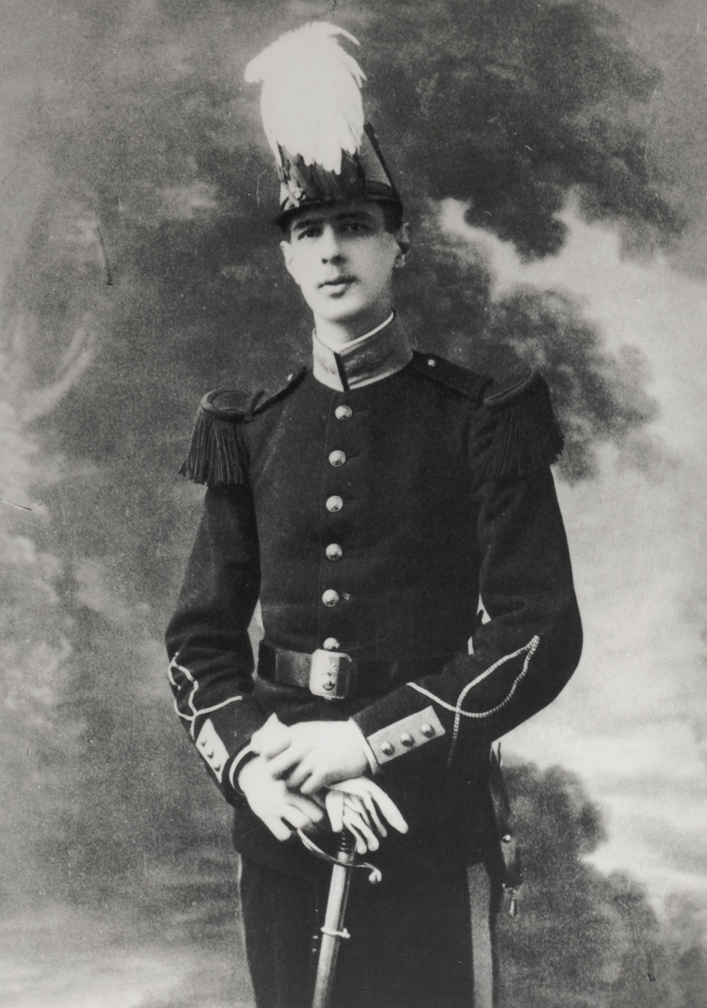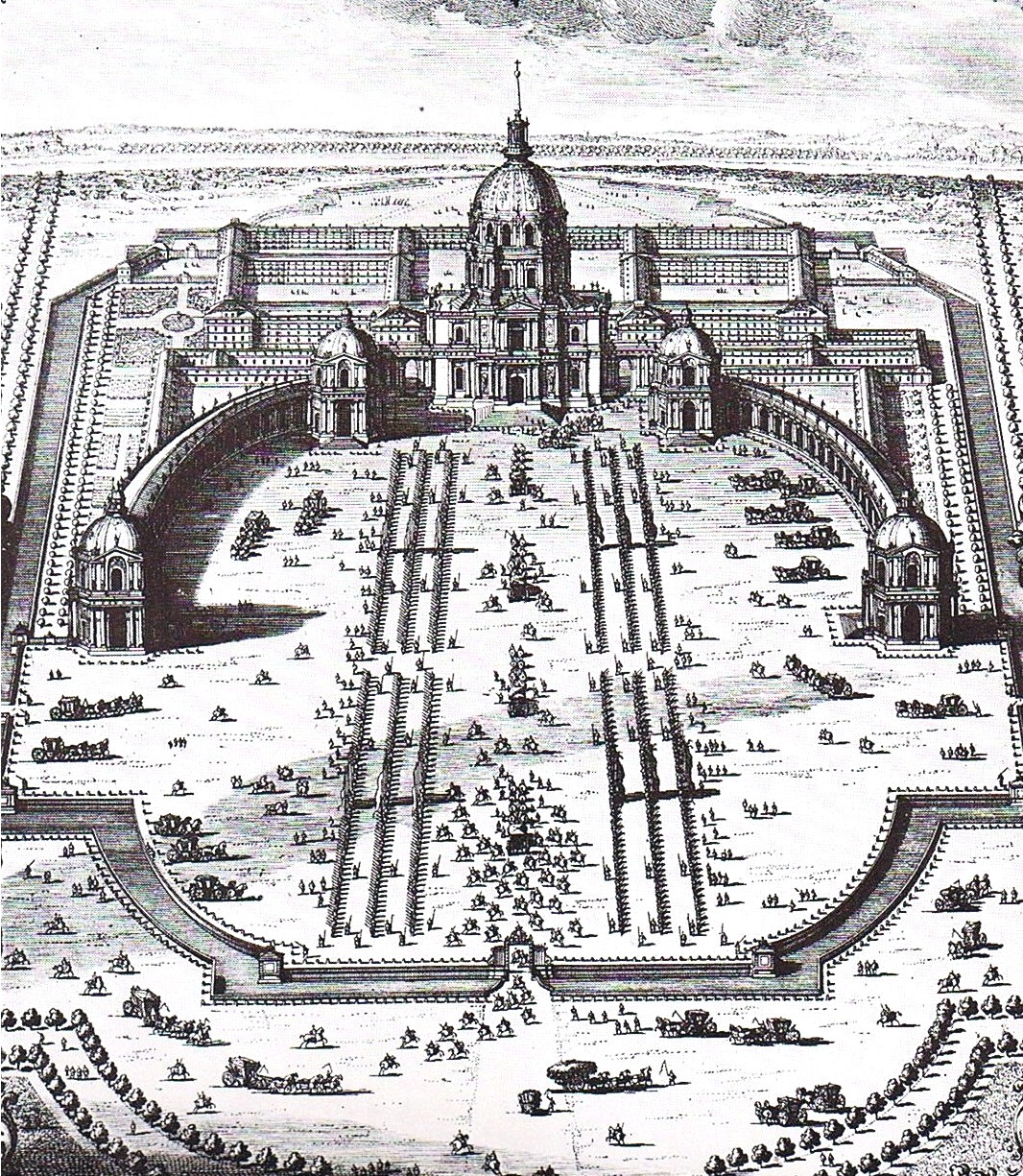|
Musée De L'Ordre De La Libération
The Musée de l'Ordre de la Libération () is a military museum located in the 7th arrondissement of Paris, France. The museum is dedicated to the Ordre de la Libération, France's second national order after the Légion d'honneur, which was created in 1940 by General Charles de Gaulle, leader of the Free French Forces. In 1967 de Gaulle moved the Order of the Liberation into Les Invalides. The museum contains three galleries and six rooms, with a total area of , and documents the history of the Free French Forces, de Gaulle's manuscripts, resistance activities, and the concentration camps. Display cases contain more than 4,000 objects including uniforms, weapons, clandestine press and leaflets, transmitters, flags taken to the enemy on the battlefields of Africa and Europe, the first naval flags of Free France, and relics from the camps. The hall of honor is dedicated to General de Gaulle. See also * List of museums in Paris There are around 130 museums in Paris, France, wit ... [...More Info...] [...Related Items...] OR: [Wikipedia] [Google] [Baidu] |
Façade Occidentale De L'Hôtel Des Invalides
A façade or facade (; ) is generally the front part or exterior of a building. It is a loanword from the French (), which means "frontage" or "face". In architecture, the façade of a building is often the most important aspect from a design standpoint, as it sets the tone for the rest of the building. From the engineering perspective, the façade is also of great importance due to its impact on energy efficiency. For historical façades, many local zoning regulations or other laws greatly restrict or even forbid their alteration. Etymology The word is a loanword from the French , which in turn comes from the Italian , from meaning 'face', ultimately from post-classical Latin . The earliest usage recorded by the ''Oxford English Dictionary'' is 1656. Façades added to earlier buildings It was quite common in the Georgian period for existing houses in English towns to be given a fashionable new façade. For example, in the city of Bath, The Bunch of Grapes in Westgate Str ... [...More Info...] [...Related Items...] OR: [Wikipedia] [Google] [Baidu] |
7th Arrondissement Of Paris
The 7th arrondissement of Paris (''VIIe arrondissement'') is one of the 20 Arrondissements of Paris, arrondissements of the capital city of France. It is known for being, along with the 16th arrondissement and the ''commune'' of Neuilly-sur-Seine, the richest neighbourhood in France. In spoken French, this arrondissement is referred to as ''le septième''. The arrondissement, called Palais-Bourbon in a reference to the seat of the National Assembly (France), National Assembly, includes some of the major and well-known tourist attractions of Paris, such as the Eiffel Tower, the Hôtel des Invalides (Napoleon's resting place), the Chapel of Our Lady of the Miraculous Medal, as well as a concentration of museums such as the Musée d'Orsay, Musée Rodin and the Musée du Quai Branly – Jacques Chirac. Situated on the Rive Gauche—the "Left" bank of the River Seine—this central arrondissement, which includes the historical aristocratic neighbourhood of Faubourg Saint-Germain, con ... [...More Info...] [...Related Items...] OR: [Wikipedia] [Google] [Baidu] |
Ordre De La Libération
The Order of Liberation (, ) is a French Order which was awarded to heroes of the Liberation of France during World War II. It is a worn by recipients only before the ''Légion d’Honneur'' (Legion of Honour). In the official portrait of General de Gaulle as President, he wore the grand collar of the Order and not the grand collar of the Légion d'Honneur, hence signifying the preeminence of the Order ahead of the Légion d'Honneur. Individuals (nationals and foreigners such as the Sultan of Morocco), cities and military units were awarded it upon the sole decision of De Gaulle for feats of heroism in the French Resistance, the Forces Françaises Libres and the Armée d'Afrique; and only for their deeds during World War II. To date it is the only French royal, imperial or republican chivalry order that became extinct with the death of its last member. The youngest Companion, assassinated by the Germans, was only 16 years of age. Another decoration, the '' Médaille de la R ... [...More Info...] [...Related Items...] OR: [Wikipedia] [Google] [Baidu] |
Légion D'honneur
The National Order of the Legion of Honour ( ), formerly the Imperial Order of the Legion of Honour (), is the highest and most prestigious French national order of merit, both military and Civil society, civil. Currently consisting of five classes, it was originally established in 1802 by Napoleon, Napoleon Bonaparte, and it has been retained (with occasional slight alterations) by all later French governments and regimes. The order's motto is ' ("Honour and Fatherland"); its Seat (legal entity), seat is the Palais de la Légion d'Honneur next to the Musée d'Orsay, on the left bank of the Seine in Paris. Since 1 February 2023, the Order's grand chancellor has been retired General François Lecointre, who succeeded fellow retired General Benoît Puga in office. The order is divided into five degrees of increasing distinction: ' (Knight), ' (Officer), ' (Commander (order), Commander), ' (Grand Officer) and ' (Grand Cross). History Consulate During the French Revolution, all ... [...More Info...] [...Related Items...] OR: [Wikipedia] [Google] [Baidu] |
Charles De Gaulle
Charles André Joseph Marie de Gaulle (22 November 18909 November 1970) was a French general and statesman who led the Free France, Free French Forces against Nazi Germany in World War II and chaired the Provisional Government of the French Republic from 1944 to 1946 to restore democracy in France. In 1958, amid the May 1958 crisis in France, Algiers putsch, he came out of retirement when appointed Prime Minister of France, Prime Minister by President René Coty. He rewrote the Constitution of France and founded the French Fifth Republic, Fifth Republic after approval by 1958 French constitutional referendum, referendum. He was elected President of France later that year, a position he held until his resignation in 1969. Born in Lille, he was a decorated officer of World War I, wounded several times and taken prisoner of war (POW) by the Germans. During the interwar period, he advocated mobile armoured divisions. During the German invasion of May 1940, he led an armoured divisi ... [...More Info...] [...Related Items...] OR: [Wikipedia] [Google] [Baidu] |
Free French Forces
__NOTOC__ The French Liberation Army ( ; AFL) was the reunified French Army that arose from the merging of the Armée d'Afrique with the prior Free French Forces (; FFL) during World War II. The military force of Free France, it participated in the Italian and Tunisian campaigns before joining in the Liberation of France with other Western Allies of World War II. It went on to join the Western Allied invasion of Germany. History The French Liberation Army was created in January 1943 when the Army of Africa () led by General Giraud was combined with the Free French Forces of General de Gaulle. The AFL participated in the campaigns of Tunisia and Italy; during the Italian campaign the AFL was known as the French Expeditionary Corps in Italy ( ''en Italie or CEFI)'' making a quarter of the troops deployed. The AFL was key in the liberation of Corsica, the first French metropolitan department to be liberated. The troops that landed 2 months after D-Day were the 2nd A ... [...More Info...] [...Related Items...] OR: [Wikipedia] [Google] [Baidu] |
Les Invalides
The Hôtel des Invalides (; ), commonly called (; ), is a complex of buildings in the 7th arrondissement of Paris, France, containing museums and monuments, all relating to the military history of France, as well as a hospital and an old soldiers' retirement home, the building's original purpose. The buildings house the Musée de l'Armée, the museum of the Army of France, the Musée des Plans-Reliefs, and the Musée d'Histoire Contemporaine. The complex also includes the Cathedral of Saint-Louis-des-Invalides, the national cathedral of the French military. It is adjacent to the Royal Chapel known as the , the tallest church building in Paris at a height of 107 meters. The latter has been converted into a shrine to some of France's leading military figures, most notably the tomb of Napoleon. History Louis XIV initiated the project by an order dated 24 November 1670 to create a home and hospital for aged and disabled () soldiers, the veterans of his many military campaigns ... [...More Info...] [...Related Items...] OR: [Wikipedia] [Google] [Baidu] |
List Of Museums In Paris
There are around 130 museums in Paris, France, within city limits. This list also includes suburban museums within the "Grand Paris" area, such as the Air and Space Museum. The sixteen :fr: Musées de la Ville de Paris, museums of the City of Paris are annotated with "VP", as well as six other ones also accommodated in municipal premises and the :fr:Musée de France, Musées de France (fr) listed by the ministry of culture are annotated with "MF". List Paris Grand Paris Rest of Île de France Defunct museums Paris Paris région * Château de By, Musée Rosa Bonheur, premises mostly sold by the city in 2014 * Musée d’art naïf de Vicq en Île-de-France, closed in 2014 See also * Visitor attractions in Paris, List of visitor attractions in Paris * List of museums in France {{DEFAULTSORT:Museums In Paris Museums in Paris, * Lists of museums by populated place, Paris Paris-related lists Lists of museums in France, Paris ... [...More Info...] [...Related Items...] OR: [Wikipedia] [Google] [Baidu] |
Museums In Paris
The 136 museums in the city of Paris display many historical, scientific, and archeological artifacts from around the world, covering diverse and unique topics including fashion, theater, sports, cosmetics, and the culinary arts. The first museums in Paris were established during the French Revolution as many royal properties became nationalised. In the late 19th and early 20th centuries, the Belle Époque period, a series of new museums were born in Paris, many of which came from personal collections donated by philanthropists. In recent decades, the city continues to build new museums. The Musée du quai Branly – Jacques Chirac, opened in 2006, is the latest large museum in Paris today. Being a center of art for centuries, many works of famous artists, including Leonardo da Vinci, Raphael, Claude Monet, Monet, Vincent van Gogh, Van Gogh, and Pablo Picasso, Picasso, are stored in Paris. Museums such as the Louvre, the Orsay, and the Centre Pompidou are also valued as architectu ... [...More Info...] [...Related Items...] OR: [Wikipedia] [Google] [Baidu] |
Military And War Museums In France
A military, also known collectively as armed forces, is a heavily Weapon, armed, highly organized force primarily intended for warfare. Militaries are typically authorized and maintained by a sovereign state, with their members identifiable by a distinct military uniform. They may consist of one or more military branches such as an army, navy, air force, space force, marines, or coast guard. The main task of a military is usually defined as defence of their state and its interests against external armed threats. In broad usage, the terms "armed forces" and "military" are often synonymous, although in technical usage a distinction is sometimes made in which a country's armed forces may include other paramilitary forces such as armed police. Beyond warfare, the military may be employed in additional sanctioned and non-sanctioned functions within the state, including internal security threats, crowd control, promotion of political agendas, emergency services and reconstructi ... [...More Info...] [...Related Items...] OR: [Wikipedia] [Google] [Baidu] |





